Managing employee life-cycle events — from onboarding new hires to internal moves and offboarding — is one of the most critical functions for HR, Payroll, IT, and Security teams. Workday® offers robust tools to manage these processes, but without careful planning, the JML process can become complex, error-prone, and time-consuming.
This guide provides a detailed, practical approach to simplifying JML in Workday®, ensuring accuracy, compliance, and a smooth experience for employees and teams alike.
Understanding the JML Process in Workday®
The Joiner-Mover-Leaver process involves three key types of events:
- Joiner – Onboarding new employees into the system, assigning roles, security access, payroll setup, and benefits enrollment.
- Mover – Managing internal transfers, promotions, role changes, or location changes, which require updating system permissions, payroll adjustments, and reporting structures.
- Leaver – Offboarding employees, revoking access, ensuring payroll and benefits closure, and retaining historical records for compliance.
Each stage involves multiple Workday® modules, including HCM, Payroll, Security, Benefits, and integrations with external systems. Failure to manage JML effectively can result in delayed onboarding, payroll errors, over- or under-allocated access rights, and frustrated employees.
Practical Tips to Streamline the JML Process
1. Automate Routine Approvals
Manual approvals can create bottlenecks. Workday® allows you to automate approvals while retaining oversight for exceptions:
- Configure approval chains: Map approvals to managers or roles, not individuals, so approvals automatically route based on employee hierarchy.
- Exception handling: Set up alerts for non-standard cases (e.g., high salary, cross-country moves) to ensure the right oversight.
- Notifications: Enable Workday® notifications to alert managers and HR teams when approvals are pending or completed.
Benefit: Faster processing, fewer delays, and reduced administrative overhead.
2. Use Role-Based Security
One of the biggest challenges in JML is maintaining proper access for employees:
- Assign security groups by role: Rather than managing security individually, tie access rights to job roles.
- Dynamic updates: As employees move internally, their access automatically adjusts according to their new role.
- Review periodically: Conduct regular audits of role mappings to ensure no outdated permissions remain.
Benefit: Reduced security risk, fewer errors, and simplified administration.
3. Validate Payroll and Benefits Early
Payroll mistakes can have serious consequences. Ensure all joiners and movers are correctly configured before pay runs:
- Pre-processing checks: Validate salaries, tax codes, deductions, and benefits eligibility before first payroll run.
- Automation: Use Workday® calculated fields and reports to identify missing or conflicting payroll data.
- Integration testing: Check that data flows correctly between Workday® HCM, payroll providers, and benefits systems.
Benefit: Accurate payroll, happier employees, and fewer post-processing adjustments.
4. Maintain Accurate Data During Moves
Internal moves often impact multiple systems:
- Update reporting structures: Ensure managers, department codes, and cost centers are updated to reflect the move.
- Adjust system access: Revise permissions, security groups, and application access to match the new role.
- Communicate changes: Notify relevant teams (IT, Payroll, Security) to prevent gaps in system access or pay.
Benefit: Smooth transitions with minimal disruption to employee productivity and system integrity.
5. Streamline Offboarding
Offboarding is as critical as onboarding. Proper closure ensures compliance and mitigates risk:
- Automate access removal: Use Workday® to automatically remove access to applications, payroll, and benefits on the termination date.
- Close benefits and payroll: Confirm final payments, accrued leave, and benefits termination.
- Retain records: Maintain historical records for compliance, reporting, and audits.
Benefit: Reduced risk of unauthorized access and smoother HR and payroll processes.
6. Leverage Reporting and Dashboards
Visibility is key to managing the JML process efficiently:
- Create JML dashboards: Show pending approvals, upcoming joiners, movers, and leavers.
- Track exceptions: Identify where processes are delayed or incomplete.
- Monitor trends: Use reports to spot recurring issues and improve the process over time.
Benefit: Proactive management and better decision-making for HR and Payroll teams.
7. Test Your JML Processes
Testing is often overlooked but essential:
- End-to-end testing: Simulate joiners, movers, and leavers in test environments to ensure all workflows execute correctly.
- Integration testing: Verify data flows between HCM, Payroll, Security, Benefits, and other connected systems.
- User acceptance testing (UAT): Include real users in testing to identify usability issues and gaps.
Benefit: Ensures the JML process works as expected and reduces risk of errors in production.
8. Provide Training and Guidance
Even with automated processes, employee understanding is crucial:
- Training sessions: Offer periodic walkthroughs for HR, Payroll, and managers responsible for approvals.
- Quick reference guides: Maintain clear, step-by-step documentation for common JML tasks.
- Mentorship: Pair experienced HR staff with new employees to accelerate understanding of Workday® processes.
Benefit: Better adoption, fewer mistakes, and increased confidence among employees.
9. Continuous Improvement
The JML process should evolve as the organisation grows:
- Gather feedback: Collect input from HR, Payroll, IT, and employees on pain points or bottlenecks.
- Review workflows regularly: Update approvals, role mappings, and automation rules as business needs change.
- Leverage Workday® updates: Incorporate new functionality or modules released in Workday® to improve efficiency.
Benefit: A dynamic, efficient JML process that adapts to changing business requirements.
Conclusion
A well-managed Joiner-Mover-Leaver process in Workday® is foundational to operational efficiency, employee experience, and compliance. By focusing on automation, role-based security, payroll validation, accurate data management, dashboards, testing, training, and continuous improvement, organisations can create a robust, reliable JML framework.
When implemented correctly, JML is not just a process — it’s a key driver of employee engagement, system accuracy, and business confidence. Workday® provides the tools; applying these best practices ensures those tools deliver measurable value across HR, Payroll, and IT functions.
Takeaway:
- Automate approvals and remove bottlenecks.
- Use role-based security to reduce errors.
- Validate payroll and benefits early.
- Maintain accurate data during moves.
- Streamline offboarding with automation.
- Use dashboards for visibility.
- Test thoroughly before go-live.
- Provide training and guidance.
- Continuously improve processes.

